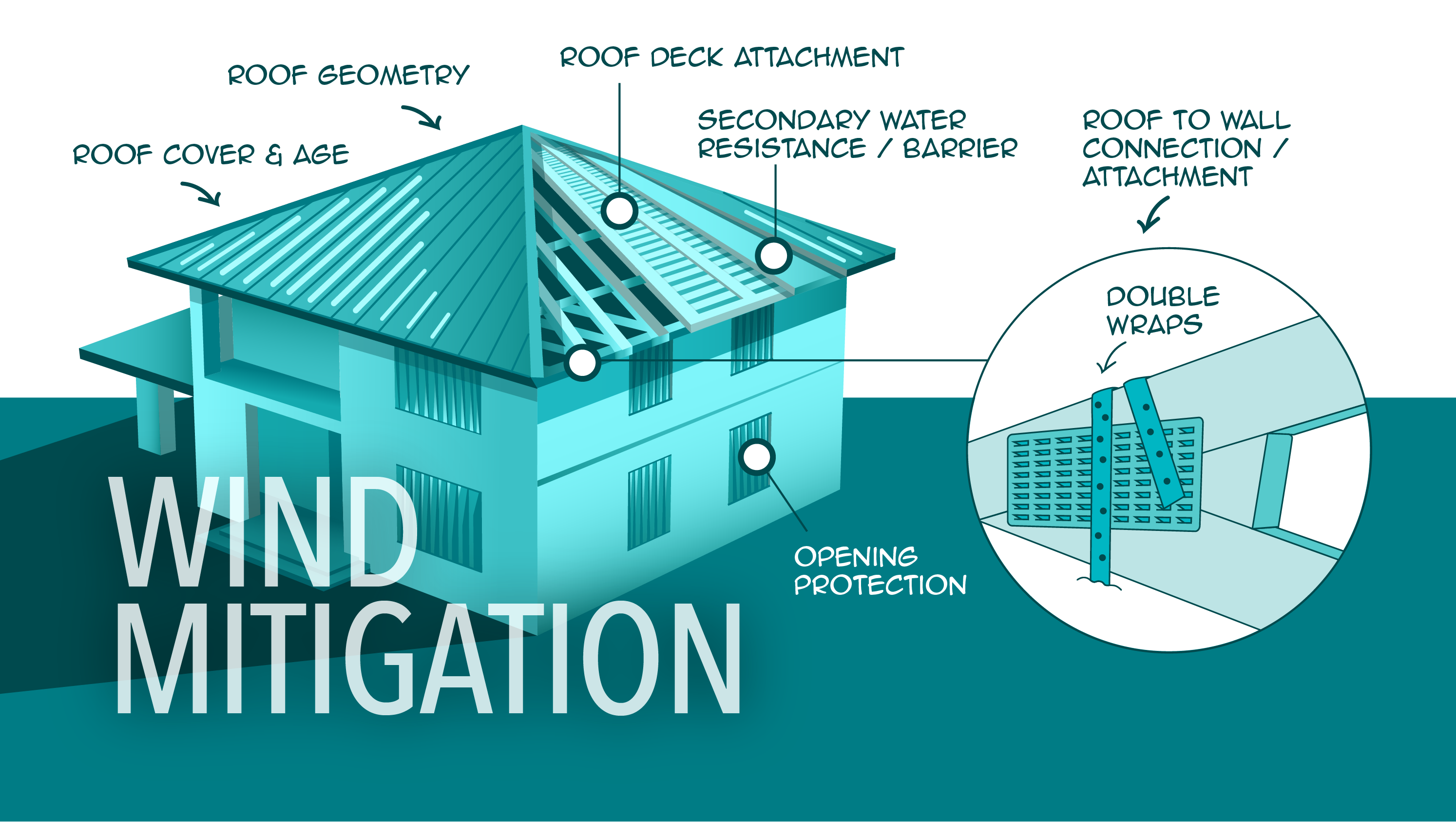There are numerous ways to fortify your home against potential disasters with Wind Mitigation. It encompasses both structural and nonstructural measures aimed at mitigating or minimizing the impact of high winds typically associated with storms. Given the heightened risk Floridians face, particularly during hurricane season, fortifying your home against powerful winds becomes an essential aspect of preparedness. Moreover, implementing such measures can often lead to insurance premium discounts based on the level of protection in place.
The Importance of Wind Mitigation
- Enhancing Safety: Wind mitigation endeavors seek to preempt hazards by reducing structural damage to your home and mitigating debris dispersion that could potentially harm neighboring properties. Ideally, this proactive approach ensures that your home remains resilient in the face of adversity, facilitating a smoother recovery process post-disaster.
- Expedited Recovery: By minimizing potential storm-induced damage, wind mitigation measures contribute to swifter recovery times, allowing homeowners to return to normalcy more efficiently following adverse weather events.
- Financial Benefits: Depending on the extent of mitigation efforts undertaken, homeowners may become eligible for insurance discounts or credits. Furthermore, bolstering your home’s resilience not only enhances its overall value but also translates to cost savings in the event of a disaster.
Key Components of Wind Mitigation
- Roof Age and Type: Factors such as the type of roofing material utilized and the age of the roof significantly influence its resilience against high winds. Modern roofing materials often adhere to more stringent standards, offering superior protection.
- Roof Deck Attachment: The material composing the roof deck, the type of fasteners employed, and their spacing all play pivotal roles in determining a roof’s ability to withstand wind forces.
- Roof-to-Wall Connections: Ensuring robust connections between the roof and walls is paramount for wind mitigation. This involves methods such as toe nails, clips, single wraps, double wraps and anchor clips. By anchoring the walls securely to the foundation and establishing a solid connection between the roof and walls, your home becomes more resilient to the various pressures exerted during high winds, thus minimizing the risk of structural damage.
- Opening Protection: Installing impact-rated materials on windows, entryways, and garage doors, such as hurricane shutters or impact-resistant windows, helps mitigate the risk of structural damage caused by wind-induced pressure differentials.
- Roof Geometry: The shape of your roof (Hip, Flat, Gable). Hip roofs are ideal because they can withstand high pressure winds. Flat roofs are another option to withstand high winds but are prone to leakage.
- Secondary Water Resistance: Implementing systems to prevent water intrusion through roof decking joints in the event of primary covering loss during storms, particularly prevalent in homes constructed post-2008, further enhances resilience against wind-driven rain.
It’s imperative to note that while fortifying your home through wind mitigation measures is vital, it should never overshadow the importance of heeding evacuation orders during severe weather events. Hurricanes often spawn tornadoes or generate powerful gusts capable of causing extensive damage, irrespective of mitigation efforts.
Source:
https://www.floridadisaster.org/globalassets/importedpdfs/wind-mitigation-booklet-.pdf
